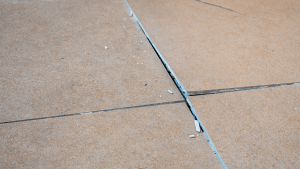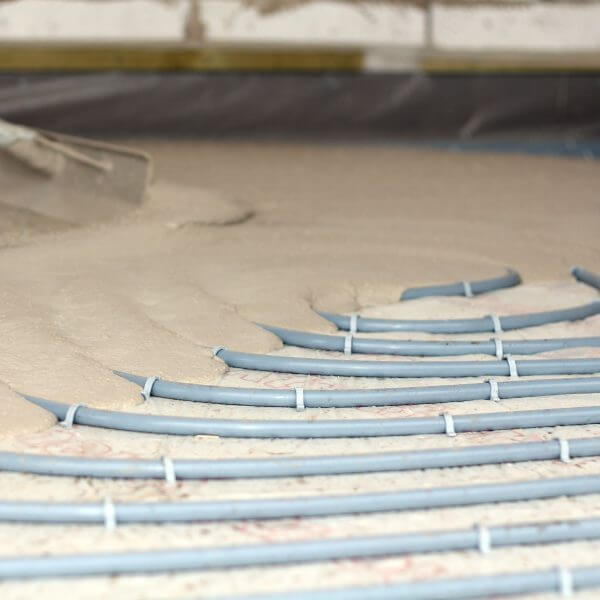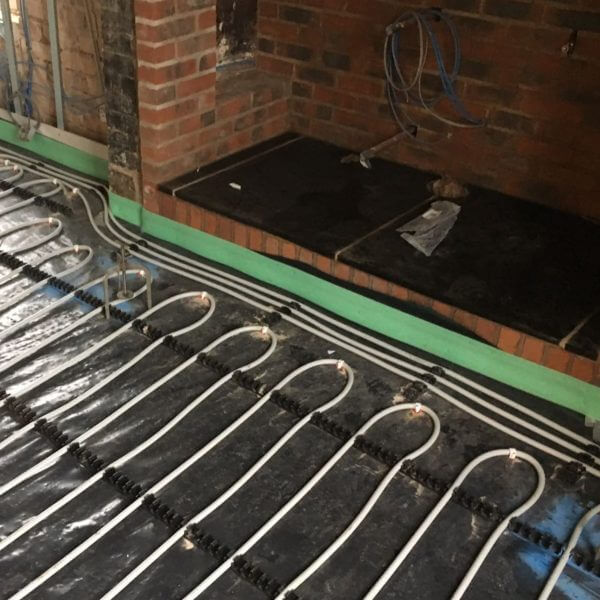Will Underfloor Heating Crack Tiles? Floor Covering Myths Explained
Perhaps the most appealing factor of underfloor heating is the ability to install it in a kitchen or bathroom, allowing you to walk barefoot on your tiled floors. When combined with liquid screed for a robust floor, few pleasures come close to walking barefoot in your kitchen on a spring morning without feeling a chill.
It comes as a surprise to us when many homeowners sit on the fence when deciding if underfloor heating is right for their kitchen or bathroom. However, we understand that it’s a common worry that it may crack your tiles. But should this be a worry, or is this just another renovation myth?
Can Underfloor Heating Crack Tiles?
Your heating will not crack your tiles, solely on the basis that they are being heated from underneath. Rather, it is a combination of other factors that make this result an eventuality.
With the right system from a qualified underfloor heating installer, and correct commissioning, your tiles will last a long time. Here are the most common reasons tiles might crack, and what we do to prevent it.
Does Underfloor Heating Work With Tiles?
Underfloor heating works with every flooring type provided that it is installed in a way that is not detrimental to the integrity of the material and foundation. How underfloor heating works at Easyflow should not affect the integrity of your tiles. In fact, tiles are often considered one of the most efficient floor coverings to lay over our system. They are more likely to be made of heat-conductive materials, which retain heat and stay warm for longer periods of time.
Porcelain, ceramic, and natural stone tiles are best suited for heated floors because of their heat conductivity. These tiles can normally withstand temperatures exceeding 1000°C, and because underfloor heating operates at 40°c, the heat alone is not enough to disturb them.
However, other factors need to be accounted for during installation and when the system is operated for the first time after the underfloor heating installer has finished. Even the best electric underfloor heating or hydronic heating setup can result in cracked tiles if the aftercare is not handled properly.
Reasons Why Tiled Floors Would Crack

Thermal Shock
Thermal shock is when a material is subjected to sudden changes in temperature and is unable to cope. Materials often become denser when frozen and expand when heated. If a cold material is subjected to a sudden change in temperature, the rapid heat expansion can stress it, causing it to break.
Thermal shock is most likely to occur during incorrect commissioning. How underfloor heating works for the first time is for the customer to gradually increase the boiler flow temperature up to 40°c, to allow their floor to adjust to the new normal. The liquid screed should also be sufficiently cured before commissioning begins.
Thermal shock can also occur when flooring is installed improperly. For example, if the floor covering was laid directly onto the heating system without floor screed or sufficient insulation in between in between. Thermal shock can also happen in poorly designed layouts that result in cold spots and overly hot spots.
These potential problems happen most from DIY installations and electric heating. Easyflow’s underfloor heating installers design and lay in a way that prevents cold and hot spots forming. We’ll also explain how to heat up your system for the first time in detail, to avoid thermal shock.
Ill-Prepared Flooring
A floor must be suitably prepared before an underfloor heating installation. It requires the foundation to be levelled, damp proofed, or sanded, to ensure the screeding does not crack afterwards. Furthermore, the screeding should be allowed to dry for the maximum amount of time before you lay tiles and adhesive. These should also be allowed to rest and cure before activating the heating for the first time.
Not accounting for these factors can result in moisture and areas of tension that would cause the screeding to crack, and the tiles to follow soon afterwards. Again, this is an issue that happens most often from DIY installations.
With Easyflow, we offer a floor preparation service both before and after the underfloor heating has been installed. We analyse site conditions thoroughly, such as floor depth and existing damp issues, and adjust where necessary.
Tile Quality & Lifespan
Low-quality tiles, or tiles that have been used for a very long time, are more prone to cracking from wear and tear. Low-quality tiles are tiles that have cheaper glazings applied to them or use low-cost materials that have a detrimental impact on their durability. If you are planning to reuse older tiles for a floor covering, know that they can also have reduced durability as a result of the stress applied to them over the years.
To prevent this, you should source tiles from a supplier who can recommend tiles of sufficient quality. If they understand how underfloor heating works, they can recommend tiles that work more efficiently.
When tiling, the adhesive itself needs to be suitable for use with underfloor heating as well. Many standard grouts and adhesives are not flexible enough to adjust to frequent rounds of heat expansion. As a result, they can weaken tiles and cause cracks.
Can you Replace Cracked Tiles on an Underfloor Heating System?
It depends on the circumstances that caused the tile to crack. In the best-case scenarios, cracks due to standard wear and tear can be removed and replaced with care. The adhesive should be removed without impacting the screeding or levelling compound, then a fresh application can be applied and sufficiently cured before you turn the heating on again.
If the tile cracked because of thermal shock, it may require re-screeding or a full re-laying if the shock was a result of a poorly designed layout. These scenarios can be very costly, and that is why you should always choose an experienced underfloor heating installer like those at Easyflow to design and install your system from the start. Your installer should be able to advise you on best practices on floor coverings, following completion of their work.
Many of the problems discussed originate from improper installation and aftercare. Cutting corners to save money, going DIY, and acting too hastily can all result in damaging your flooring. A properly installed floor heating system should last up to 50 years, not several weeks.




Where To Find Us